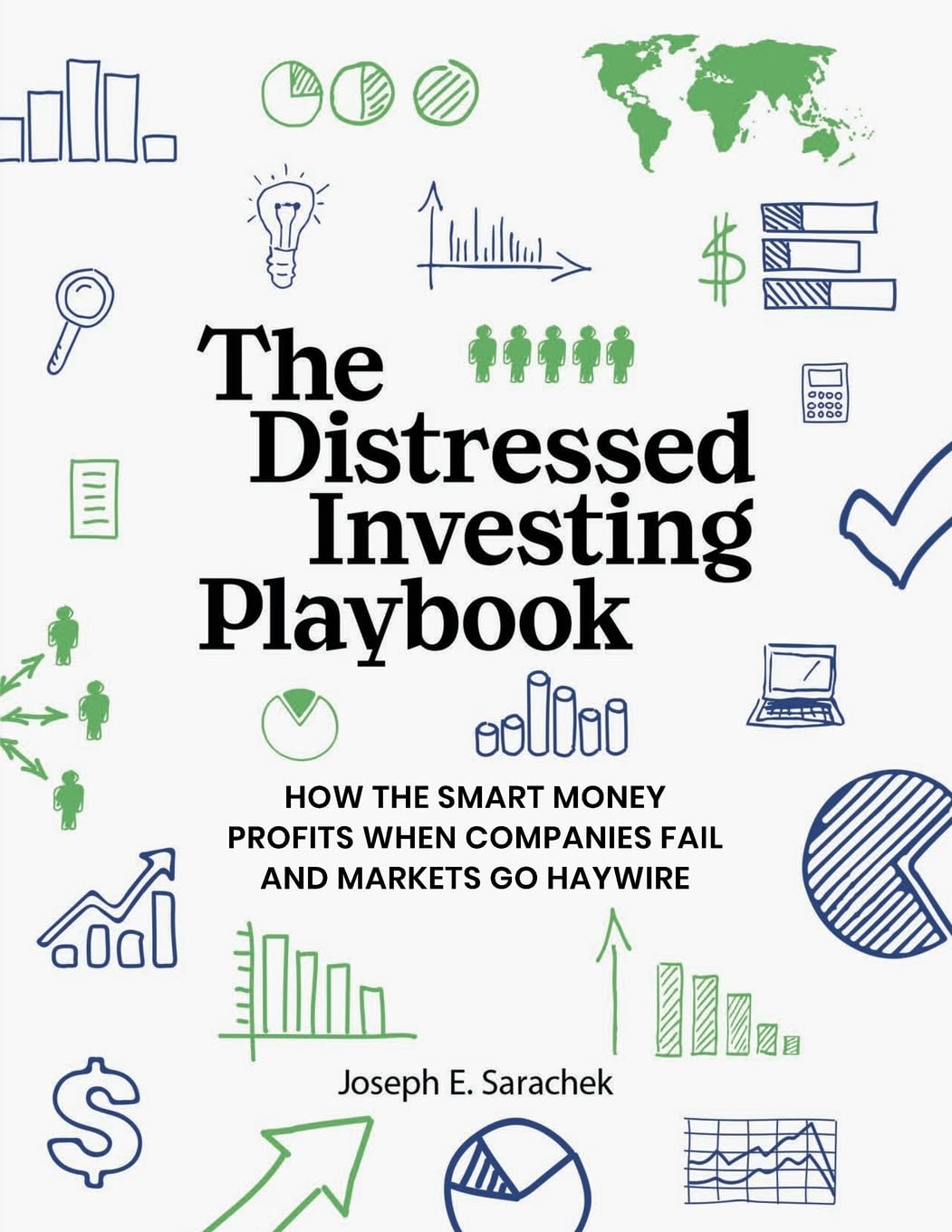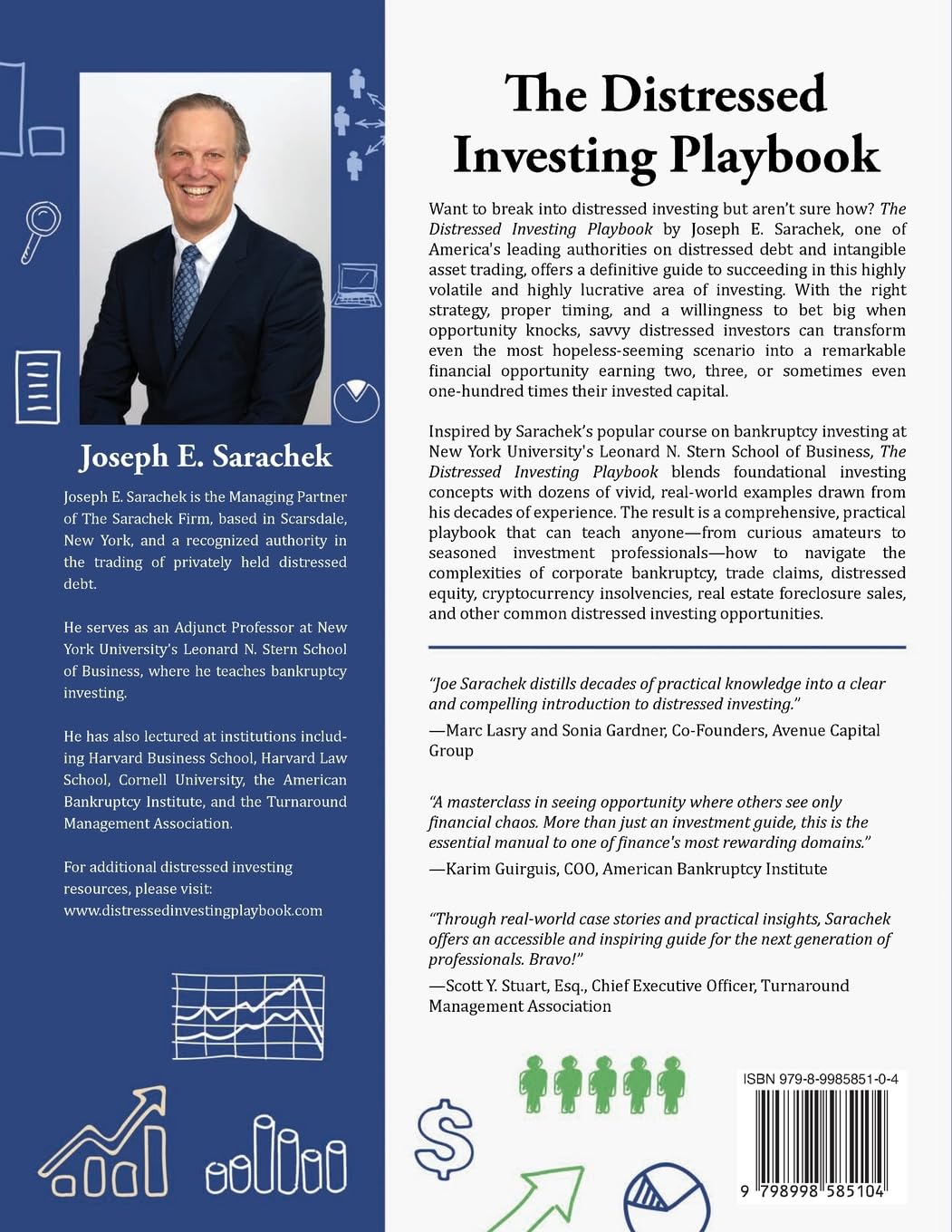I recently finished The Distressed Investing Playbook by Joseph E. Sarachek, and I couldn’t wait to share my thoughts. As someone who loves delving into financial literature—especially books that promise practical insights into complex subjects—I was drawn to this title. The world of distressed investing has always intrigued me, and I was eager to gain some knowledge on how to break into this lucrative yet challenging area.
What I found particularly compelling about Sarachek’s work is his ability to distill complex concepts into understandable language, a quality pointed out by several readers. Jamie Reyes noted that the book is "a path of light in the complex world of distressed investing," which resonated with my experience. It’s evident that Sarachek’s explanations are grounded in his extensive background, having taught a course on bankruptcy investing at NYU. This background lends the book credibility and depth, making it a fantastic resource for both newcomers and seasoned investors alike.
The book is filled with practical strategies and vivid, real-world examples. Sarachek discusses how to identify distressed assets and what investment profiles they align with, which is essential knowledge for anyone venturing into this field. The sections on accurately valuing potential assets and creating liquidation analyses particularly stood out to me. There’s a genuine sense of empowerment that comes from learning how to assess when to offer debtor-in-possession (DIP) financing and make savvy investment decisions.
However, while I appreciated the clarity and thoroughness of the book, I did find some areas that could be improved. For instance, some readers, like Pete M. Allen, expressed that while the book covers a broad range of topics, it sometimes skimps on depth in certain areas, which might leave those looking for more exhaustive analyses wanting. Additionally, I noticed that the volume of information could be overwhelming for absolute beginners, despite its accessible language. This aligns with a caution mentioned by other readers who suggested that newcomers might need supplementary resources to fully grasp some of the more intricate elements.
Nevertheless, I was pleasantly surprised by how Sarachek merges theoretical knowledge with pragmatic guidelines. His approach effectively bridges the gap between academia and practical investing, inviting readers to develop their personal distressed investing frameworks. The promise that "savvy distressed investors can transform even the most hopeless-seeming scenario into a remarkable financial opportunity" is both thrilling and believable in the context of his teachings.
If you’re serious about venturing into distressed investing, I can confidently say that The Distressed Investing Playbook offers invaluable insights and methods that are sure to help you on your journey. Whether you’re an experienced investor looking to refine your strategies or a curious amateur seeking direction, this book serves as a robust guide. I wholeheartedly recommend it as an essential addition to your financial library.
In conclusion, this work exceeded my expectations and certainly deserves its 5-star rating. Sarachek not only covers necessary concepts with expertise but also empowers readers to take actionable steps in their investing journeys. If you’re ready to dive into the world of distressed assets, this playbook might just become your strongest asset.








